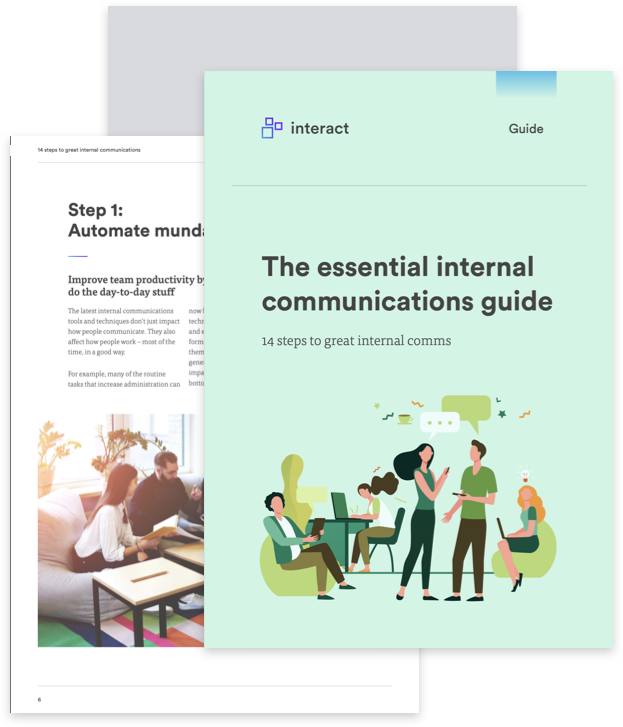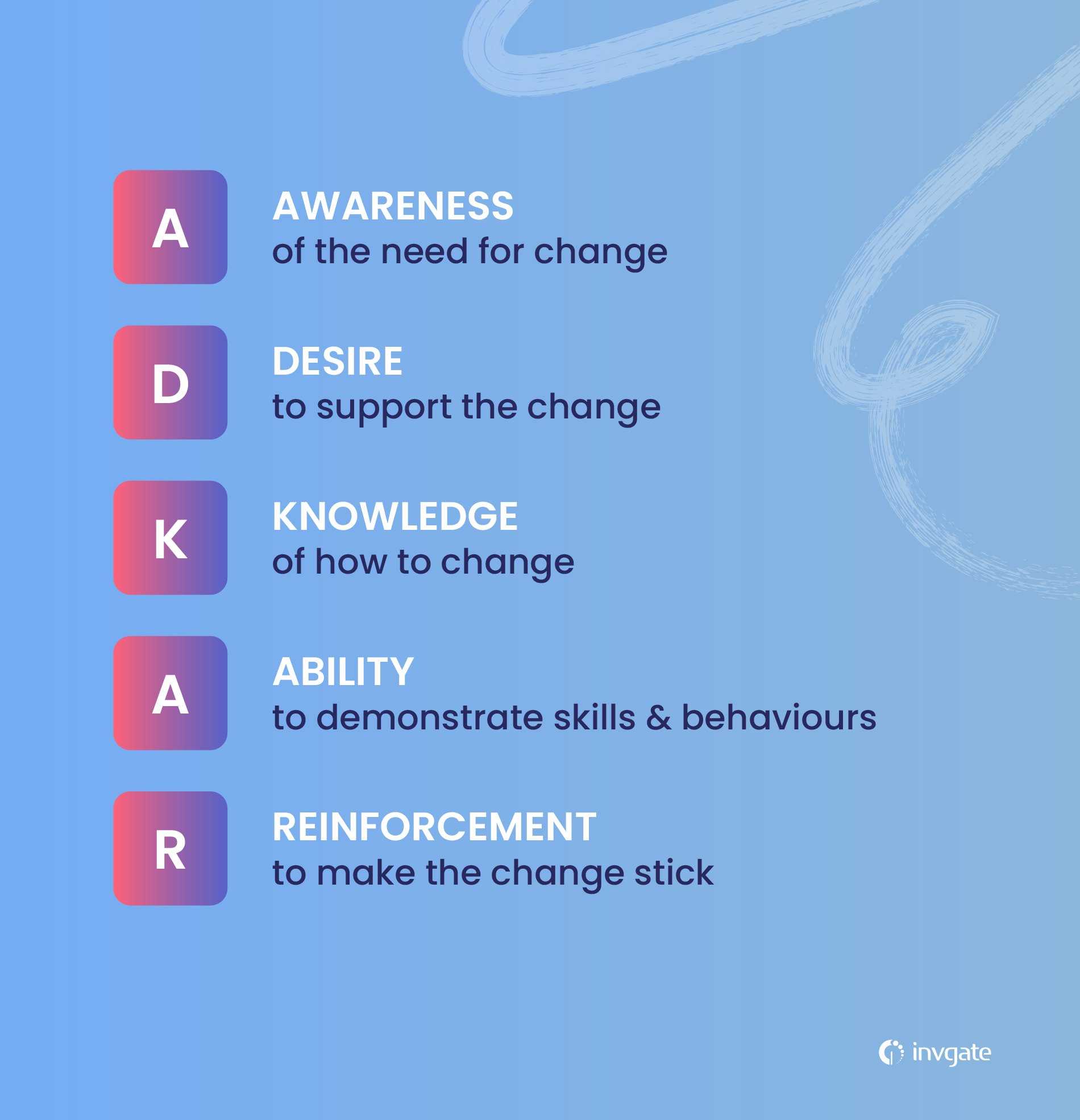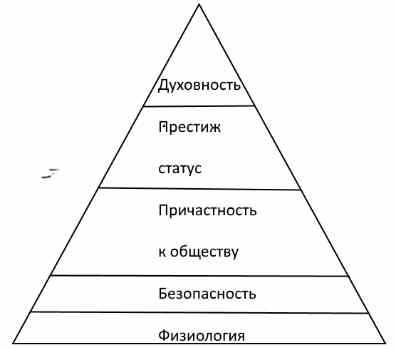Personalize your internal communications campaign
When it comes to producing your campaign materials, it’s worth revisiting your audience research, employee personas, and the “what’s in it for me” factor to fine-tune your internal communications campaign to different staff personas. Personalization is an important driver of engagement.
The level of detail may also vary according to the staff you’re targeting. Do senior-level managers need to be given different information from their direct reports, so they’re better equipped to answer questions? Perhaps you’re announcing a new process that some staff need to be fully trained on, but that others simply need to be made aware of.

Key Takeaways
- Understanding the customer’s perspective is crucial for delivering value. By focusing on “What’s In It For Me” (WIIFM), businesses can tailor their products or services to meet customer needs, ensuring satisfaction and long-term success.
- To effectively integrate WIIFM into business practices, companies should establish customer service protocols, train staff to prioritize customer needs, anticipate customer preferences, reward loyalty, and go the extra mile in service delivery.
- Gathering feedback, analyzing data, and asking direct questions are essential for identifying and meeting customer desires. Constantly refining strategies based on customer responses helps in building and maintaining customer loyalty and satisfaction.
Get feedback and measure your internal communications campaign’s success
After you’ve launched your internal communications campaign, there’s still work to be done. Measuring your success and getting feedback are essential steps in the process.
While your campaign may not require a ten-page report on its ROI, it’s important for internal communications teams to demonstrate value. Quantifying and highlighting positive outcomes can help secure buy-in, budget, and resources for future projects and initiatives.
Consider adding anecdotal or soft ROI measurements to your plan. Ask your audience what they felt worked well, found engaging, or responded to the most. The more data you get, the more you can learn and the better your future internal communications campaigns will be.
Feedback can provide insight into your audience, channels, and strategies. Identifying which parts of your internal communications campaign were successful will help you learn from the things that worked, and the things that didn’t.

How do you find employees’ WIIFM?
You don’t have to be psychic to figure out what people need. But what you do need, if you were listening to the example above, is to be ready to open a clear line of communication with each individual. People need to tell you, in their own words, “What’s in it for me?”
In a way, it’s like any sort of interpersonal relationship. It’s being assertive, communicative, but being able to listen. It’s no different than any sort of other commitment and should be approached as such. Sure, it’s not quite the same as making vacation plans with your spouse, but it’s not that structurally different either.
And that’s why we think that WIIFM requires:
- Paying attention: be open, listen, and take in what the other person is actually saying. Don’t wait for your turn to speak; be present and mindful of what is happening. Try to understand their real needs, not the ones that slot into your pre-existing pitch. Sometimes being surprised and going off-script can work wonders. Don’t hold on to your plans just because it took you a long time to come up with them; be open to being proven wrong.
- Ask and you shall receive. In a non-confrontational manner, go ahead and ask each employee what they want to get out of a particular situation. Ask them what you could be doing to help keep them motivated. Ask them about their frustrations and desires. Write down what you want to know and ask!
- Pay attention to blockers and what de-motivates people. And then, STOP! Find out what people like and dislike, both in their work environment and the way you operate. Of course, some things can’t be helped — if someone’s going “I don’t like coming in for work,” then that’s too bad. But, within reason, you can try to strike a delicate balance in order to, if not be a people-pleaser, then at least not nagging them to death.
Remember the ADKAR model for change management. If you keep these concepts in mind, you should be able to effectively communicate with your employees and meet them where they stand.

WIIFM is a nice bit of codified human nature that can be leveraged to the advantage of any organization and the individuals therein.
People want things, and organizations want things as well. And it takes a bit of finessing to get everyone on the same page. If you’re too much of a despot, then things won’t go your way however much you push. Sure, people will listen at first, but your job desertion numbers will be through the roof after a while.
Conversely, give too much and you’ve got yourself a slippery slope. It’s always a good idea, though, to maintain a well-oiled line of communication to stay connected with the shifting needs of your employees, and still be able to comfortably assert yours.
Prosci, a change management firm, had this to say about the matter on their blog:
“Communications cannot be viewed as an activity that is planned, delivered, and then checked off the list of work to be done. You must find ways to ensure that employees are hearing and interpreting the messages you are trying to send.”
Maintain the channel open at all times, and you’ll be well on your way to success.
How to Identify Your Customers’ WIIFM?

So, how do you pin down your client’s deep desire so you can be their white knight?
1. Keep your customer’s best interest at heart.
Setting your customer’s best interest at heart means always acting in a way that will benefit the customer, even if it means making a sacrifice on your part. You put their needs and wants first, above your own.
For example, if a customer is unhappy with a purchase, you should make things right, even if it means taking a financial loss. Or, if a customer is interested in a product that is not right for them, it is your responsibility to steer them towards a better option.
This principle may seem common sense, but it’s amazing how many companies are willing to sacrifice their customers’ satisfaction to save a few dollars. Always putting your customer first will build a reputation for being fair and reliable – two essential qualities for any business. You’ll see all will pay off in the long run.
2. Pay attention to what your customers say and do.
If you pay attention, your customers will give you plenty of clues about what they want and need. Observe their behavior, both online and offline. Listen to the words they use. Read between the lines of their actions. All of this will give you valuable insights into their wants and needs.
3. Ask your customers directly.
Often, the best way to find out what your customers want is to ask them. You can work on this through surveys, interviews, focus groups, or even just one-to-one conversations.
Don’t be afraid to reach out to your customers and ask them what they want. They’ll be happy to tell you, and you’ll save time and energy finding out.
4. Use data and analytics.
Data and analytics can be powerful tools for understanding your customers’ WIIFM. You can do this by surveying your customer base, analyzing purchasing patterns, or tracking engagement with your brand.
Creating targeted marketing campaigns, developing new products or services, or improving customer experience with the gathered information is much easier.
5. Listen to your customer’s feedback.
Your customers will also give you feedback, whether you ask for it or not. It’s important to listen to this feedback and use it to improve your business.
Positive feedback can be used as validation that you’re on the right track. It can also give you ideas for improving or expanding your business. Negative feedback can identify areas where you need to make changes.
Responding to feedback shows that you care about your customers and their experience with your brand. It’s a manifestation that you take them seriously.
Что такое клиентский опыт? [Определения]
Как упоминалось выше, вопрос «что такое клиентский опыт?» имеет широкий спектр ответов. Вот несколько наиболее полезных определений клиентского опыта (за которыми следует наше собственное определение клиентского опыта B2B следующего уровня):
Определения клиентского опыта
Webopedia:
Клиентский опыт — это фраза, используемая для описания отношений клиента с бизнесом. Опыт клиента относится к сумме всех впечатлений клиента от бизнеса, основанных на всех взаимодействиях и мыслях о бизнесе.
Опыт клиента может включать в себя множество элементов, но на самом деле он сводится к тому, как клиент воспринимает ваш бренд.
Harvard Business Review:
Сумма всех взаимодействий клиента с компанией. Это может включать в себя все, начиная с первоначального знакомства клиента с компанией, продуктом или услугой и заканчивая покупкой и использованием этих продуктов или услуг. Вместе эти … точки соприкосновения … создают общий опыт работы с клиентами в организации.
HubSpot:
Впечатление, которое вы оставляете у своих клиентов, в результате чего они думают о вашем бренде на каждом этапе пути клиента. Множество точек соприкосновения влияют на качество обслуживания клиентов, и эти точки соприкосновения возникают на кросс-функциональной основе.
Gartner:
Восприятие потребителя и связанные с ним чувства, вызванные разовым и кумулятивным эффектом взаимодействия с сотрудниками, системами, каналами или продуктами поставщика.
TechTarget:
Клиентский опыт (CX) — это совокупность восприятий и чувств клиентов, возникающих в результате взаимодействия с продуктами и услугами бренда. Клиентский опыт охватывает всю жизнь отношений клиентов с брендом, начиная с момента совершения покупки, продолжая активное использование и переходя к продлению или повторной покупке.
Конечно, концепция клиентского опыта охватывает как B2B, так и B2C контексты, тем более что восприятие вашей организации вашими корпоративными клиентами и клиентами неизменно будет формироваться индивидуальным восприятием ключевых людей, с которыми вы находитесь в тесном контакте.
Наша компания сфокусирована на стратегии обслуживания клиентов B2B, потому что она лежит в основе почти всего, что мы делаем. Мы не только продолжаем оставаться первопроходцами в области обучения работе с клиентами, мы придерживаемся модели постоянного совершенствования для предоставления и развития беспрецедентного качества обслуживания клиентов B2B для каждой из организаций, с которыми мы сотрудничаем.
Вот наш расширенный взгляд на определение клиентского опыта, который включает в себя два ключевых признака нашей работы по обучению: акцент на отношениях и акцент на вашем будущем:
определение следующего уровня обслуживания клиентов B2B | Обучение глобальных партнеров
Клиентский опыт B2B — Общие отношения клиента с вашей организацией, построенные на сумме всех ваших взаимодействий с этим клиентом и включающие осознание клиентом того, что вы привержены пониманию его наиболее важных бизнес-целей и сосредоточены на содействии их текущим и будущий успех.
Go live
After all your hard work researching, brainstorming, strategizing, and planning, the moment of truth is here.
If you have a specific action you want staff to take as a result of your internal communications campaign—whether that be registering for an event, reading and acknowledging a new policy, or switching to a new tech platform—ensure your call to action is clearly communicated and emphasized when you go live.
Depending on the nature of your campaign and your audience, it may be helpful to have signs posted so that employees can see essential information as they go about their days. Be sure to include points of contact for any questions they might have. You should also have a designated team member on hand to field inquiries virtually, in person, or both.
Пирамида потребностей Маслоу
И еще одно. Весь набор потенциальных потребностей можно отнести в несколько основных категорий потребностей:
- ФизиологияВ нашем случае категория физиология — это вопрос цены: Если я куплю эту штуку, то у меня не останется денег на еду. Это дорого
- Безопасность
- Одобрение общества
- Престиж
- Духовность
Эти категории имеют свою иерархию и объеденные в пирамиду, получившую наименование пирамида потребностей Маслоу.

Каждая категория имеет свой приоритет — от потребности в удовлетворении физиологических запросов к вопросам духовности. И если, например, у клиента запрос на престиж, то вопросы к физиологическим запросам будут неинтересны.
Категории потребностей не нужно расценивать как самоцель. Например, если у покупателя запрос «престиж», то он не станет покупать что-то престижное только от того, что это что-то престижное. Товар или услуга должны удовлетворять конкретные потребности.
Например, человек хочет пить. Жажда — основной запрос. Но утолить жажду можно водой из-под крана (физиология, дешевизна) или элитной столовой водой за 100$/ литр (престиж).
В процессе установления контакта и выявлении потребностей человек сам расскажет о том, что его интересует. Главное задавать вопросы и слушать.
Importance of Customer Lifetime Value (CLV) in Marketing
The importance of Customer Lifetime Value (CLV) in marketing is significant, as it provides a comprehensive understanding of the long-term value of customers to a business. Here are key reasons why CLV is essential in marketing:
- Guiding Marketing Spend: CLV helps in allocating marketing budgets more effectively. By understanding which customers are most valuable over time, businesses can tailor their spending to acquire and retain high-value customers, ensuring a better return on investment.
- Enhancing Customer Segmentation and Targeting: Knowing the CLV allows marketers to segment their audience more accurately and target customers with the highest potential value. This leads to more personalized and effective marketing campaigns.
- Improving Customer Retention Strategies: CLV emphasizes the importance of retaining customers. Increasing customer retention rates by 5% increases profits by 25% to 95%. It often costs less to retain an existing customer than to acquire a new one. Understanding the lifetime value of customers can lead to more focused and effective retention strategies.
- Driving Business Growth and Profitability: High CLV is indicative of customers who contribute significantly to the revenue over time. Focusing on increasing CLV can drive sustainable business growth and profitability.
- Informing Product Development and Innovation: CLV data can provide insights into the needs and preferences of the most valuable customers, guiding product development and innovation towards offerings that meet these customers’ needs.
- Creating Long-Term Relationships: By focusing on CLV, businesses are encouraged to create and maintain long-term relationships with their customers, fostering loyalty and trust.
- Optimizing Customer Experience: Understanding the value of customers over their lifetime motivates businesses to optimize customer experiences, as positive experiences can significantly impact CLV.
CLV is a very important metric in marketing, not just for measuring customer value, but also for informing strategic decisions across various aspects of marketing performance and business operations, ultimately leading to more customer-centric and profitable practices.
Place for Everything
Where you place your call-to-action is also important. Don’t waste the reader’s time, so use strategically placed subheads and bullets to draw attention to what you want them to do. For example, if you were selling a course on how to make an infographic, you could start with information about why infographics are beneficial and then lead into your product.
The call-to-action should be placed near the end of the copy, after you’ve already given them a glimpse of what’s included in your product or service. You could also use bullets to list off features and benefits so people know exactly why they need it. In this way, you will be putting the WIIFM equation to work and making people want to do what you tell them.
Роль продукта в масштабировании успеха клиентов в SaaS
Вы продаете SaaS-продукт. Именно таким образом вы должны создавать ценность, через ваш реальный продукт. Маркетинг заведет вас только так далеко; личные отношения тоже. Если у вас посредственный продукт, вы можете иметь самую сильную команду по работе с клиентами и пытаться использовать ее для снижения оттока, но ничто не сравнится с улучшением вашего продукта. Нам, маркетологам, гораздо проще продвигать хорошие продукты. Мы видим гораздо более высокую рентабельность наших кампаний, когда мы продаем хороший продукт.
Эти личные отношения также становятся очень дорогими. Для того чтобы масштабироваться, вам необходимо оптимизировать стоимость услуг. Если ответ всегда будет заключаться в увеличении команды CS, вы не сможете масштабироваться должным образом. Для того чтобы оптимизировать затраты на обслуживание, вам нужно проверить, чего вы ожидаете. Следите за показателями NPS или показателями удовлетворенности клиентов. Следите за показателями уровня усилий клиентов и, конечно же, обязательно отслеживайте отзывы в Интернете.
По сути, я хочу сказать следующее: не попадайте в ловушку создания большой команды по работе с клиентами, которая как бы компенсирует некоторые недостатки вашего продукта. Вкладывайте больше средств в свою команду, устраняйте основные причины неудовлетворенности, сообщайте клиентам о дорожной карте продукта, и пусть технология говорит сама за себя.
Tips to Improve Customer Lifetime Value (CLV)
Is my CLV normal? There’s nothing like “normal” for CLTV. Any CLV is normal if your business stays alive. You should concentrate on how to increase your Customer Lifetime Value at any stage of your business development. And if you want a sign from above, here are some interesting statistics: if your CLV is three times your CAC, everything is going well. If not, you have a lot of things to do to improve the situation.
To boost your CLV figures, you should continuously work to improve your customer-brand connection. Here are a few options for how to achieve a lasting and positive customer relationship:
- Launch a loyalty program: You can use different forms: client cards or mobile applications, earning points only by customer phone number, and much more. The main thing remains unchanged. You offer customers personal discounts and other benefits.
- Improve your customer experience: All touchpoints with customers (online and offline stores, support centers, social networks, etc.) should be monitored continuously. Listen to your customers and make the necessary changes if needed.
- Enhance Onboarding Processes: In sectors like SaaS or fintech, a smooth onboarding experience is crucial for customer retention. Simplifying sign-up and tailoring experiences increases customer satisfaction and loyalty, directly impacting LTV.
- Reward Top Customers: Recognizing and offering exclusive benefits to your most valuable customers fosters a sense of appreciation, encouraging long-term loyalty and enhancing LTV.
- Implement Omnichannel Support: Providing consistent and seamless support across various platforms, like websites, apps, and social media, builds trust and customer loyalty
- Leverage Social Media: Engage customers with compelling content, timely responses, exclusive promotions, and influencer collaborations on social media to boost loyalty and LTV.
- Adopt Closed-Loop Feedback: Promptly address customer feedback and make necessary improvements. Showing customers that their opinions are valued strengthens loyalty and increases LTV.
WIIFM is a deeply personal question… so make your benefits personal
Sure, execs liked the ring of ‘modern’ and ‘transformed’. They liked the idea of strategic planning, project management and continuous improvement. But those concepts were too abstract. Too impersonal.
Day to day, leaders are under pressures that have nothing to do with lofty outcomes. They needed to hear that working with us would:
- Solve painful problems with unions
- Improve embarrassing scores on employee surveys
- Meet performance commitments that made them sweat over their ever-shrinking budgets
- Get ahead in their careers and earn performance bonuses
- Impress their bosses (without requiring extra effort)
Those would have been invaluable benefits for execs.
Could we have promised those things openly? Hard to say. Corporate culture encourages coded, impersonal, indirect language.
Assuming we had some freedom to break those norms…
If we’d used copywriting to nail those egocentric, specific, and deeply emotional “WIIFM” motivations, things may have turned out differently.
When it came time for department cuts, executives may have said, ‘No way. We need those guys.’
“What’s in It for Me?”
This question, acronymed to WIIFM, is important to consider as you design and implement your direct sourcing program—specifically in your talent community. Gaining insight into the answers to this question takes an appreciation of what drives high-value independent professionals. What are they most passionate about? What are their goals?
Independent professionals are business owners, and like all business owners, they want to grow their companies. Increasing revenues, finding new revenue streams, and growing in their markets are common business goals, and they apply to independents as well as any other company. Beyond that, though, there are distinctions that set them apart.
The number one reason that independents choose their path is choice and control over their lives and careers. Our Client of Choice 2020 report found that 79% of independent professionals said they are intent on continuing their work style and 59% said they wouldn’t choose to go back to a traditional job. Independents also expressed an overwhelming need or desire to get personal satisfaction from their work, with 77% saying that it is more important to do something they like than to make the most money.
The majority of independents surveyed for our most recent State of Independence research are happier and healthier. Independents exceed employed workers in achieving life goals that include spending time with family, getting the most out of life, and leading a fulfilling life.
Independents are highly likely to gravitate toward work and clients that support and augment the ability to create the life and work styles they prefer while growing their businesses.
Как выбрать правильного клиента для вашего SaaS-продукта
Одна из самых больших ошибок SaaS-стартапов заключается в том, что они берутся за любого, кто входит в дверь. Customer Success начинается с установления правильных ожиданий. Если вы продаете не тому клиенту, который не будет соответствовать тому, что предлагает ваша услуга, это немедленно скажется на показателях успешности клиентов. В конечном итоге, вы хотите оптимизировать количество пожизненной потребительской ценности, которую вы получаете.
Еще одна причина, по которой это действительно важно, заключается в том, что стоимость услуг может быть очень высокой, если вы не обслуживаете правильных клиентов. Им требуется много дополнительной помощи, потому что они просто не подходят
Это может начинаться с того, что ваша собственная служба поддержки не только не требует особого внимания, но и очень сложна.
Если вы не оказываете активной помощи своим клиентам в достижении успеха, то со временем появится тенденция к их оттоку. Есть несколько индикаторов, за которыми можно следить:
-
Снижение использования или неактивность после регистрации — если ваш клиент не использует ваш продукт, он не получит ожидаемой рентабельности инвестиций и, следовательно, скорее всего, уйдет. Это также является индикатором того, что вы продаете не тому клиенту, который вам нужен.
-
Застойные внедрения — иногда человек, подписывающий контракт, не является тем же самым человеком, который будет использовать продукт на регулярной основе, и тогда вместо того, чтобы внедрять ПО сразу после подписания контракта, вам приходится ждать, пока люди получат внутреннюю поддержку. А иногда люди просто не решаются!
-
Проблемы с качеством продукта (больше обращений в службу поддержки) — если вы начинаете слишком часто слышать от клиента о проблемах с вашим программным обеспечением, это, скорее всего, свидетельствует о том, что он вам не подходит. Компании-разработчики программного обеспечения регулярно обновляют свои продукты, поэтому если эти проблемы решаются в дорожной карте вашего продукта, и вы сообщаете об этом своим клиентам, вы можете пройти через это, но как только вы начнете получать слишком много жалоб, вы, скорее всего, увидите отказ от вашего продукта в будущем, особенно если внедрение конкурента не требует больших затрат.


























